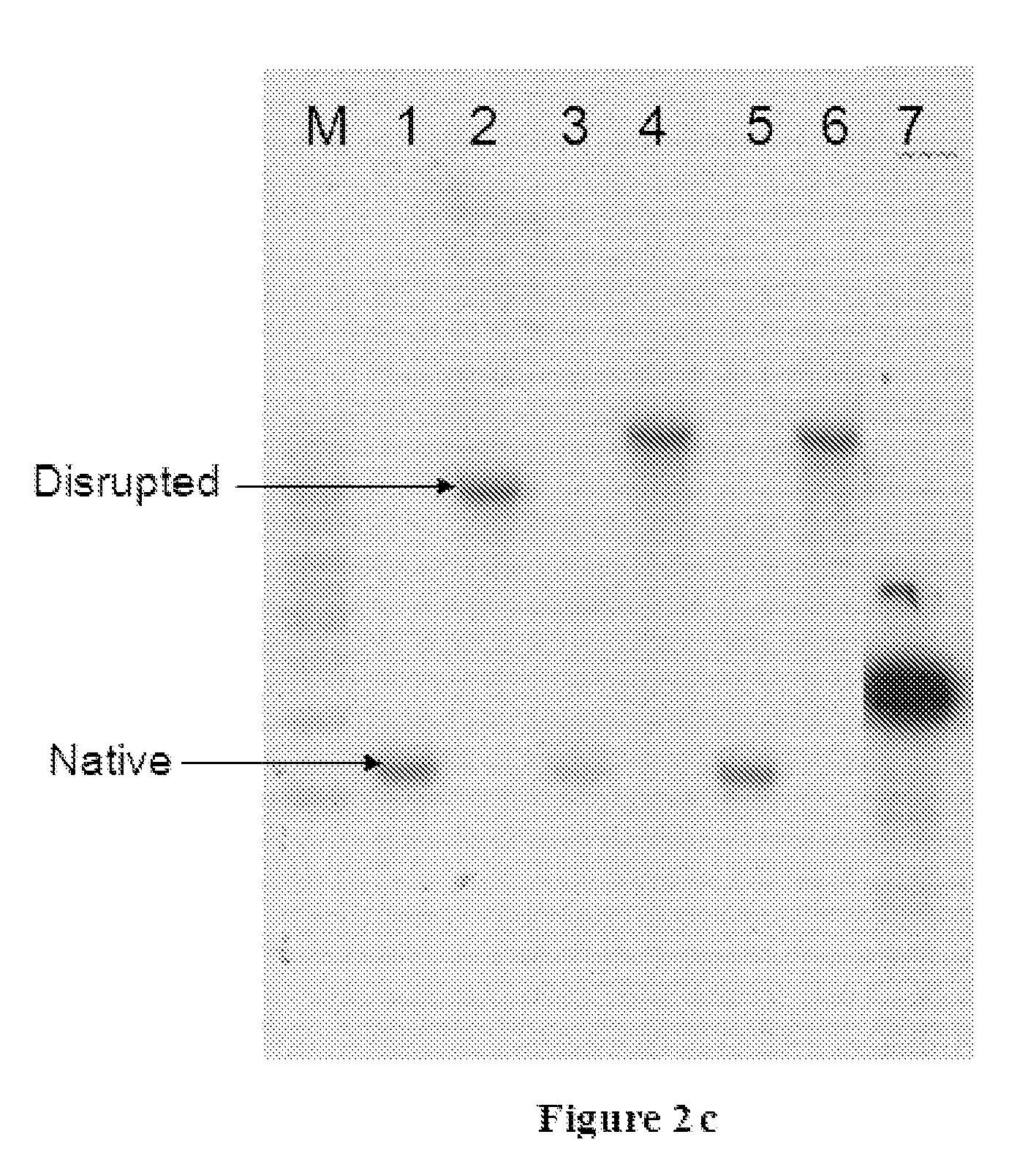Method of reducing glycosylation of proteins, processes and proteins thereof
a technology of glycosylation and protein, applied in the direction of peptides, hormone peptides, peptides/protein ingredients, etc., can solve the problems of complex protein purification, difficult purification of final product impurities, and difficulty in achieving high yields
- Summary
- Abstract
- Description
- Claims
- Application Information
AI Technical Summary
Benefits of technology
Problems solved by technology
Method used
Image
Examples
example 1
Disruption of PMT1
[0158]About ˜477 bps of coding sequence involving part of the Pichia pastoris PMT1 coding region was amplified using following PMT1 primers
PMT1FP = 5′ GGA TCC TAA TAG CCC ACT CTG ATC TACCTC ACT 3′PMT1RP = 5′ GGA TCC AAA GCC CTC ATG TCC ATA AGCAGA 3′.
[0159]Two stop codons were included in the forward primer in frame to avoid any read-through from potential earlier translation starts sites in the vector. PCR product was cloned into pTZ57R vector, and sequenced using M13FP and M13RP to confirm the clone. The PMT1 fragment was excised using BamHI and cloned into pPICZ alpha in BamHI and Bgl II sites. Clone giving 1775 bps and 576 bps fragments was selected. The PMT1 disruption cassette was transformed into Pichia Pastoris GS115. The plasmid was linearized using the BstEII site which is almost in the middle of PMT1 disruption fragment that is transformed into the Pichia strain by electroporation. The transformed clones are selected using 100 μg / ml of zeocin. A couple of...
example 2
Disruption of PMT6
[0161]About ˜515 bps of coding sequence involving part of the PMT6 coding region was amplified using following primers
PMT6FP = 5′ GGA TCC TAA TAG CTT GCC GTT AAG AGATAC GAT GA 3′PMT6RP = 5′ GGA TCC TGA GAA TGC AAG TTT GCA CCAGTA 3′
[0162]Two stop codons were included in the forward primer in frame to avoid any read-through from potential earlier translation starts sites in the vector. The PCR product was cloned into pTZ57R vector, sequenced using M13 FP and M13RP to confirm the clone.
[0163]The PMT6 disruption cassette was transformed into Pichia Pastoris GS115. The plasmid was linearised using the unique NdeI site which is almost in the middle of PMT6 disruption fragment that is transformed into the Pichia strain by electroporation. The transformed clones are selected using 100 μg / ml of zeocin. A couple of hundred colonies were obtained and the individual colonies were streaked onto YPD plates. The genomic DNA was isolated from each of the clones and PCR was carried...
example 3
Disruption of PMT4
[0164]About ˜516 bps of coding sequence involving part of the PMT4 coding region was amplified using following primers.
PMT4FP = 5′ GGA TCC TAA TAG GTT CAT TTC GCT ATTCTA AGC A 3′PMT4RP = 5′ GGA TCC TTT CGA CTT CAA AGG ACG GGTT 3′
[0165]Two stop codons were included in the forward primer in frame to avoid any read-through from potential earlier translation starts sites in the vector. The PCR product was cloned into pTZ57R vector, sequenced using M13 FP and M13RP to confirm the clone.
[0166]The PMT4 disruption cassette was transformed into Pichia Pastoris GS115. The plasmid was linearised using the unique XcmI site which is almost in the middle of PMT4 disruption fragment that is transformed into the Pichia strain by electroporation. The transformed clones are selected using 100 μg / ml of zeocin. A couple of hundred colonies were obtained and the individual colonies were streaked onto YPD plates. The genomic DNA was isolated from each of the clones and PCR was carried o...
PUM
| Property | Measurement | Unit |
|---|---|---|
| resistance | aaaaa | aaaaa |
| density | aaaaa | aaaaa |
| stability | aaaaa | aaaaa |
Abstract
Description
Claims
Application Information
 Login to View More
Login to View More - R&D
- Intellectual Property
- Life Sciences
- Materials
- Tech Scout
- Unparalleled Data Quality
- Higher Quality Content
- 60% Fewer Hallucinations
Browse by: Latest US Patents, China's latest patents, Technical Efficacy Thesaurus, Application Domain, Technology Topic, Popular Technical Reports.
© 2025 PatSnap. All rights reserved.Legal|Privacy policy|Modern Slavery Act Transparency Statement|Sitemap|About US| Contact US: help@patsnap.com



